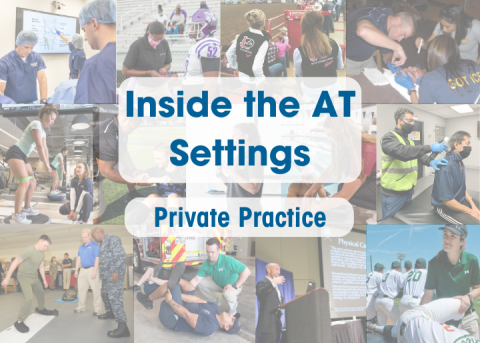
Introduced in the April NATA News, this NATA Now article series provides insight into the different athletic training settings as well as information athletic training students and interested ATs need to know. The series also provides tips from members on how to succeed in each setting.
Michael Donahue, DAT, LAT, ATC, owner of The Athletic Training Room LLC, has been in the private practice setting for nearly 10 years. He said he was drawn to open his own practice after seeing how well Division I athletes responded to athletic trainers.
“I looked at the experience and access to athletic trainers that Division I athletes have and thought that the general public also deserved that access to quality health care,” Donahue said. “As I was wrapping up graduate school, I worked on the business plan and market research and opened my business the weekend after graduation.”
Read on to learn more about the private practice setting from Donahue.
Typical Makeup of Your Population
We have two branches to the business. One is outreach services, where our primary target population is youth sports, secondary schools and adult leagues. The second is direct patient care. That target population is the active individual who is experiencing a sports-related injury. The typical patient can be a teenager or middle-aged.
Non-AT-Related Skills/Education/Certification Required or Helpful for Your Setting
You will need to educate yourself on operating a business in your state. There are some differences there, but you will need to learn skills such as accounting and other administrative duties that are not common in AT education. You also need to understand insurance for your business, a retirement planning and budgeting.
Common Injuries Observed or Encountered in Your Setting
We see a wide variety based on the sport and the ability level of our patients. In outreach, we see injuries consistent with those specific activities.
Traits of a Successful AT in Your Setting
ATs in this setting need to have interest in administrative duties with attention to detail. ATs always need to be hard workers, but ATs who own their own business truly need to work hard to grow the business and maintain that success.
Misconceptions About Your Setting and/or Patient Population
Business ownership might seem unattainable, but ATs provide unique services and can be very successful as business owners.





